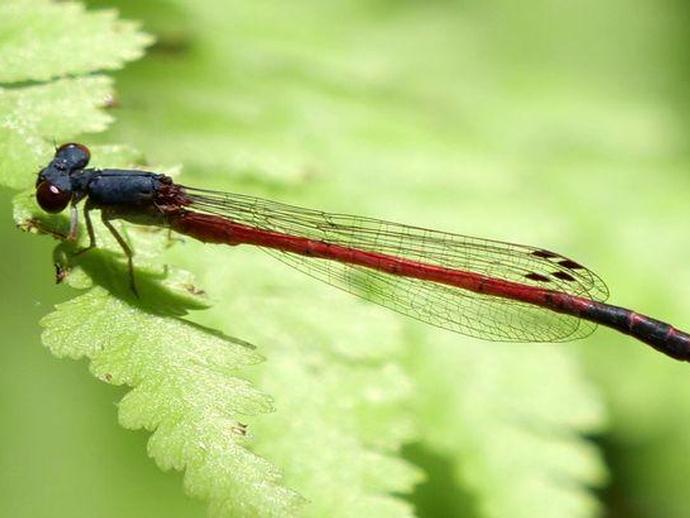July 21, 2021
Ben here with today's edition of #BenInNature presented by our friends at Carter Bank & Trust!
This is Amphiagrion saucium, the eastern red damsel, and it's a fairly common damselfly. However, it's pretty easily overlooked due to its small size and its tendency to hide in thick vegetation!
Damselflies belong to the suborder Zygoptera in the order Odonata, which also contains the dragonflies. Damselflies and dragonflies are pretty closely related, and they're both ancient insects. The easiest way to tell the difference is that damselflies fold their wings over their back when they land while dragonfly wings stick straight out.
Much like dragonflies, damselflies are predators; they eat tiny aquatic insects while they're in the aquatic nymph stage, and they snatch bugs from the air once they become adults.
This particular damselfly is most common in the eastern U.S. They tend to be found near seeps, bogs, ponds, and sometimes small rivers. They often hide in thick grass, so keep an eye peeled for a tiny flash of red when you're walking near a boggy area!
ABOUT #BenInNature
Social distancing can be difficult, but it presents a great opportunity to become reacquainted with nature. In this series of posts, Administrator of Science Ben Williams ventures outdoors to record a snapshot of the unique sights that can be found in the natural world. New updates are posted Monday - Friday, with previous posts highlighted on the weekends. This series of posts is made possible thanks to the support of VMNH Corporate Partner Carter Bank & Trust (www.cbtcares.com).
NATURE PHOTO IDENTIFICATIONS
If you discover something in nature that you would like help identifying, be sure to message us right here on Facebook with a picture (please include location and date of picture) and we'll have our experts help you identify it!

 Hours & Admissions
Hours & Admissions Directions
Directions

